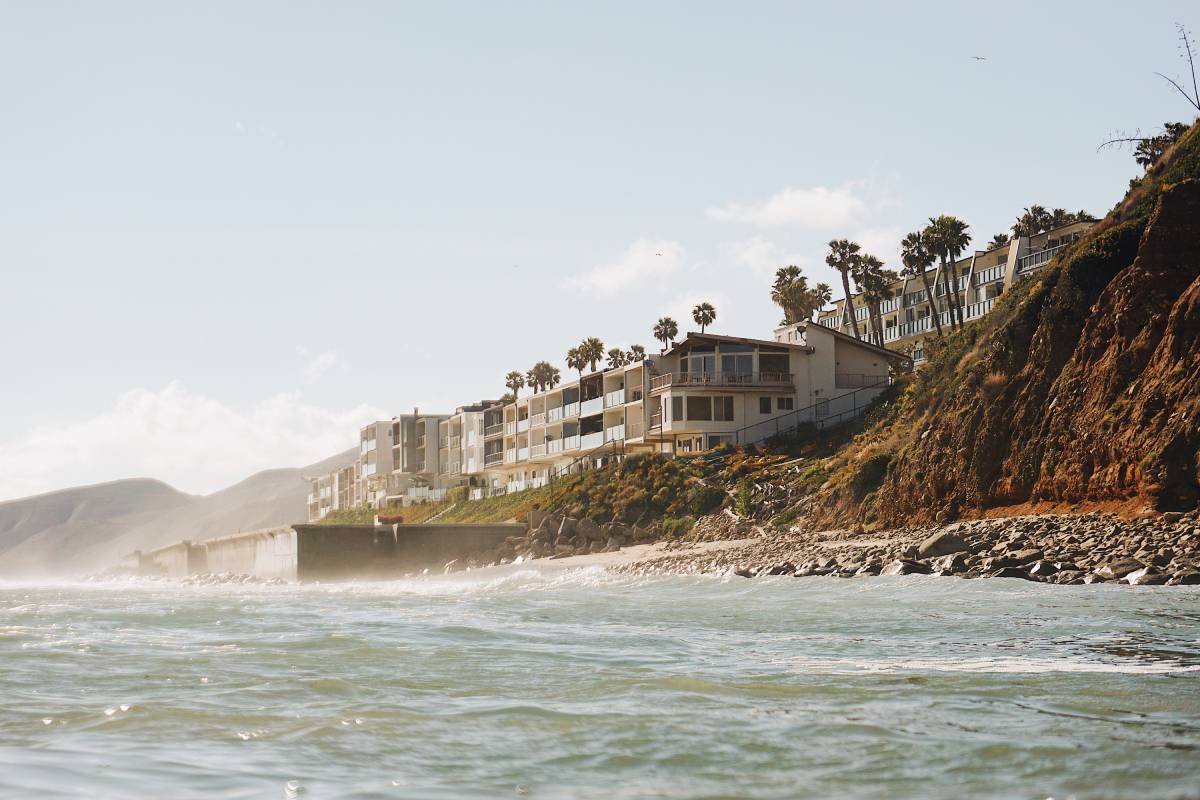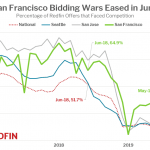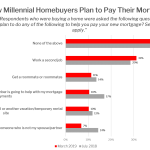After Last Year’s Malibu Wildfire, New Residents Face Higher Insurance Premiums, While Many Who Lost Homes are Moving Elsewhere

Here’s how the Malibu and Topanga housing markets have recovered, eight months after the Woolsey Fire.
With summer heat in full swing, the threat of wildfire season returns. The 2018 wildfire season in particular was the deadliest and most destructive on record in California. Southern California’s Woolsey Fire in particular blazed through Los Angeles and Ventura Counties last November, including popular coastal communities of Malibu and Topanga, burning 96,949 acres and destroying and/or damaging over 1,800 structures in its wake.
Now, fast approaching a year later, things are largely back to normal. Blissful views of the Pacific frame an idyllic scene that was nearly lost roughly eight months ago. But the most obvious signs of the fire’s impact stand in plain sight: empty lots with ‘For Sale’ signs where homes once stood.
“Last year was a rough period in Los Angeles, but especially for those in the Malibu and Topanga Canyon areas,” said Redfin agent Alec Traub. “Over the years, I’ve helped a number of clients buy and sell homes in the affected areas. Many families were evacuated with nowhere to go. It was scary, and watching felt helpless. As an agent who helped people buy homes there, you feel responsible to a certain extent. It connects you.”
Fortunately, all of Alec’s clients were safe, and months later, there’s still plenty of demand for homes in Malibu. Here’s a snapshot of life after the fires.
The Malibu market
“The market has not plummeted in Malibu by any means,” Alec said. “While things are softer, that’s always been the case, compared to other luxury areas of LA, like Beverly Hills. Due to its remote location, home prices tend to fluctuate, and homes typically sell for less and stay on the market longer. Still, there’s demand to buy and sell.”
But the face of that demand is changing. “We are seeing more homes or properties that were burned down now being sold as land,” Alec said.
Indeed of the 384 homes listed in the city of Malibu on Redfin during the first week of July, 125 were land plots. In Topanga, 72 out of 143 were lots. While not all are necessarily the land of homes lost, that’s still 33 and 50 percent of homes for sale, respectively.
That’s up slightly in Malibu from July of 2018, before the fires, when 117 of the 415 active listings in Malibu were vacant land, and 69 out of 128 listings were land plots in Topanga.
Additionally, the median sale price of a home in Malibu in May of 2019 was $1,670,000. In May of 2018, six months before Woolsey, Malibu’s median sale price was $3,250,000, which is nearly double today’s typical home price.
Where demand has taken a hit however, is the usually thriving rental market.
“Many homes in Malibu are vacation or investment properties that are rented, especially in the summer, when homes rent for a high premium. This year, the demand has decreased,” Alec said. “I know an owner of multiple high-end properties, one of which is booked every summer. It’s still not booked, which is indicative of where the rental market is. People who rent for the summer are typically from out of the state or country, and are scared to pay $100,000 a month after seeing what happened last year. Locals on the other hand, have an understanding of the frequency and reality of wildfire season, and are less intimidated, but also less likely to want to rent in Malibu as it’s too remote.”
Many directly impacted by the fires are looking elsewhere
While there are plenty of exceptions, Alec reports most people who lost their homes are not rebuilding.
“Many people whose homes burned down don’t want to recreate what they had. Rebuilding in the same place would be a constant reminder of what was lost, which can be hard to wrap emotions around,” Alec said. “But people aren’t making a mass exit, either. They’re just putting their lots for sale to have a fresh start.”
Alec reports many of those fresh starts are in other high-end coastal communities like Santa Monica and Pacific Palisades. “These neighborhoods have a similar upscale feel. They’re close to the beach, are family friendly, with ocean views, and you can still get to Malibu easily. But it’s not a dramatic shift. The buyer interested in Malibu won’t be looking in downtown L.A., or even Venice.”
For some whose homes remained intact, the Woolsey Fire was enough of a scare to spur a change in scenery as well.
“I have a retired client living in Malibu. His house was not damaged, but the fires made him think twice about growing old out there,” Alec said. “Living on his own and seeing the destruction made him realize wildfires are a risk he is no longer willing to take. He rented his house and moved to a beautiful condo in Santa Monica. It’s not a large house on the water like in Malibu, but he feels safer growing older with less risk.”
The canyon communities are still a draw for many
The departure of longtime canyon residents means openings for those who previously did not have a way into the Malibu area. Open lots and newly listed homes present new accessible options for buyers, and attractive opportunities for developers.
“You’re not guaranteed safety no matter where you live, and many clients understand that. I’m working with a couple who just moved from Culver City to Topanga Canyon. They’re planning to start a family soon and want a more rural feel for the future, similar to their East Coast upbringings,” Alec explained. “The couple found a home in Topanga that is very remote, with little around except other scattered homes. It’s beautiful, with brush and mountains, but is certainly high-risk.”
And while his clients were willing to accept the risks, many insurance companies won’t.
“My clients had a lot of trouble getting insurance. We worked with the same insurance broker as the sellers of the home. Even though it’s the same property, and was not damaged in the fire, it was very difficult to get a new policy for the same coverage,” Alec said. “Seeing how real and widespread the risk of fires is, a lot of insurers are pulling back. If something like this happens again, it will be difficult for them to pay out on all the damage.”
While increasingly hard to secure, fire insurance is still a necessity, and in most local closings, required.
“Of course the buyers wanted the home regardless, but fire insurance was required to satisfy their lender’s financing condition, and securing it delayed closing by over a week,” Alec said. “They had to get multiple carriers and take out three separate policies covering earthquake, fire, and regular home insurance. They are also paying double, if not more, than expected, as a consequence of last year’s fires specifically.”
While the process might seem a red flag to outsiders, for Californians, it simply comes with the territory.
“Topanga is a fire zone, but Culver City is an earthquake zone. That’s part of living in Southern California. The risks of course went through their minds, but this canyon home offered the lifestyle they wanted for their future family. The pros out-weighed the cons.”
Looking ahead
As Alec noted, there’s no guarantee against wildfires. The best thing any buyer or seller can do is fully understand the risks.
“Understand the risks and elevated costs related to not only owning, but maintaining a property in a fire zone. That includes strict rules around yearly brush clearance and the rising costs of services and insurances,” Alec warned. “My Topanga buyers were ultimately okay with these challenges, but it’s not for everyone. It’s important to have honest conversations about these topics between agent and client.”
The post After Last Year’s Malibu Wildfire, New Residents Face Higher Insurance Premiums, While Many Who Lost Homes are Moving Elsewhere appeared first on Redfin Real-Time.




